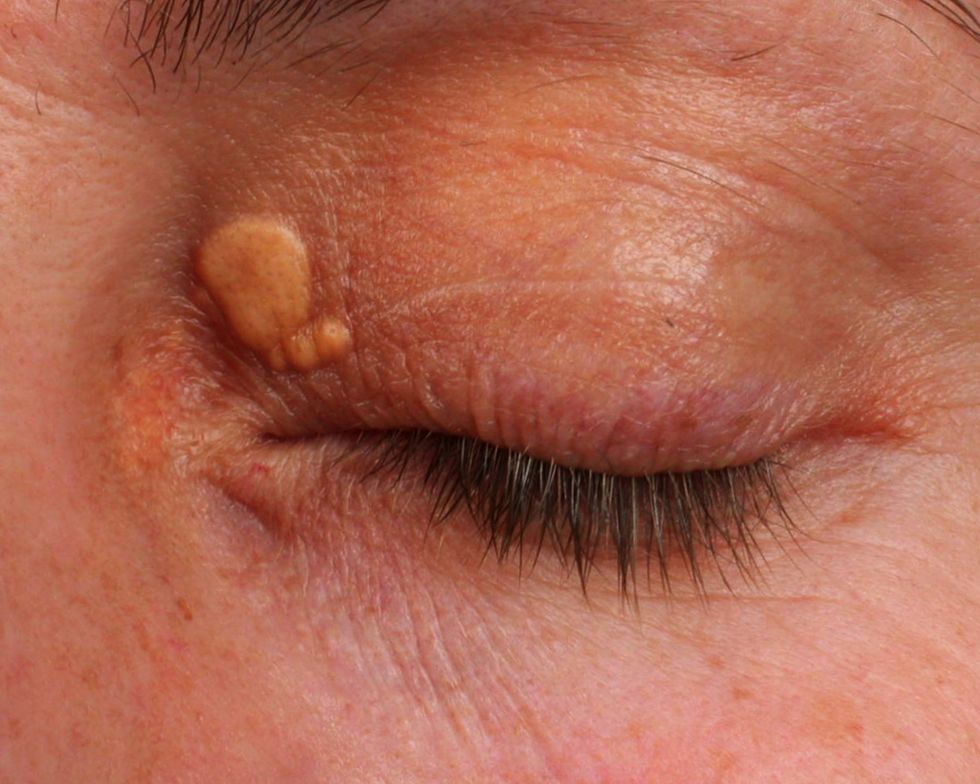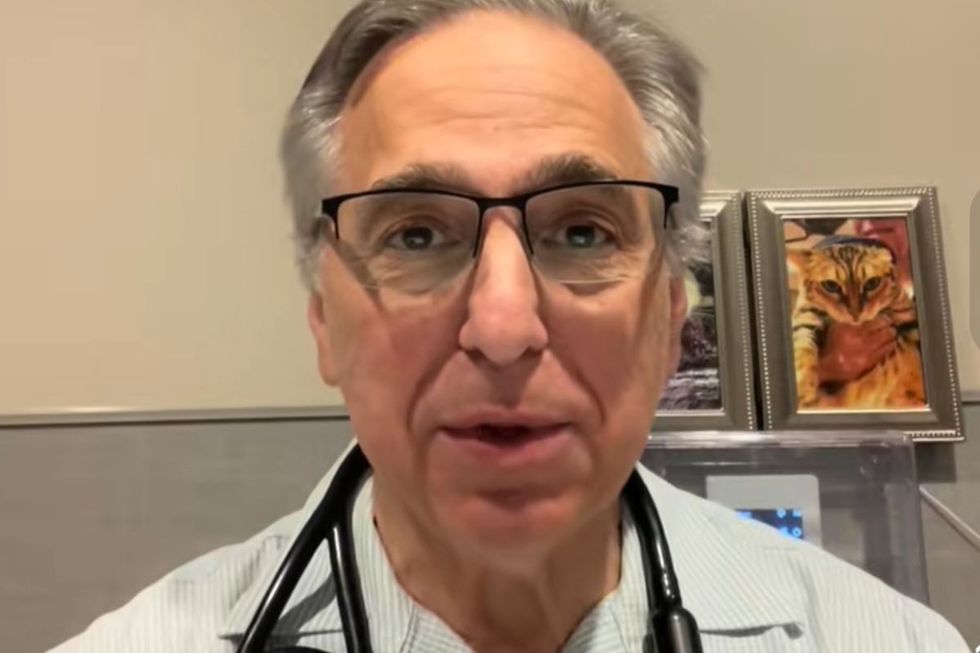High cholesterol warning as cardiologist describes facial sign you're at 'significant risk' of a heart attack

The cardiologist described crucial indicators of high cholesterol that shouldn't be ignored
Don't Miss
Most Read
Latest
Soft yellowish bumps appearing around the inner corners of your eyes might be more than just a cosmetic concern - they could be warning you about dangerously high cholesterol levels and potential heart attack risk.
These bumps, known as xanthelasma, affect roughly one per cent of the population and are packed with cholesterol deposits.
The Greek-derived name combines "xanthos", meaning yellow, reflecting their distinctive appearance near the nose area.
A prominent cardiologist has recently highlighted these eye bumps as a crucial health indicator that shouldn't be ignored.
TRENDING
Stories
Videos
Your Say

Xanthelasma typically appears in the corner of the eye nearest to the nose
|GETTY
The warning is particularly urgent for younger people, as the presence of xanthelasma in those under 30 could signal serious underlying cholesterol problems requiring immediate medical attention.
Dr Evan Levine, a cardiologist who recently discussed the condition on his Instagram channel, revealed that half of all people with these bumps have extremely high cholesterol levels.
This includes those with inherited conditions where the body produces excessive amounts of cholesterol.
"This could be a significant risk for a heart attack," Dr Levine warned his viewers while showing images of the yellowish bumps.
He stressed that while cosmetic removal by plastic surgeons or dermatologists is possible, the bumps will return if the underlying cholesterol problem isn't addressed.
"They'll be back because you're churning out cholesterol, and if it's not treated, meanwhile, you might be waiting to have a heart attack," he explained.
Cholesterol forms the primary component of plaque that lines artery walls, restricting blood flow throughout the body.
This fatty build-up gradually narrows blood vessels, increasing the chances of heart attacks and strokes - making early intervention crucial.
The troubling reality is that many people discover their high cholesterol only after experiencing a serious cardiac event that lands them in the hospital.
The condition typically develops silently, with fatty deposits accumulating over time without obvious warning signs.
According to the NHS, high cholesterol rarely causes noticeable problems, which is why blood tests remain the only reliable way to detect elevated levels before they cause life-threatening complications.
The NHS identifies several key factors behind high cholesterol, with poor diet, insufficient exercise, alcohol consumption and smoking topping the list.
While those over 50 face a greater risk, the condition can also be hereditary, passing through families regardless of age.
LATEST DEVELOPMENTS

Dr Evan Levine warned viewers about xanthelasma on TikTok
|TIKTOK / EVAN S LEVINE / INSTAGRAM
Lifestyle choices play a major role - consuming fatty foods while leading a sedentary life creates the perfect conditions for cholesterol to accumulate.
Combined with drinking and smoking, these habits accelerate the build-up of fatty lipids in blood vessel walls.
Since high cholesterol develops without symptoms, regular blood tests are essential for detection.
The NHS stresses this point clearly on its website - only proper testing can reveal elevated cholesterol levels before they trigger a potentially fatal cardiac event.
Our Standards: The GB News Editorial Charter











